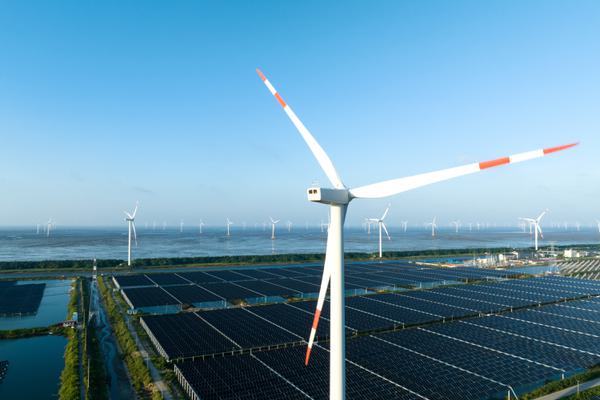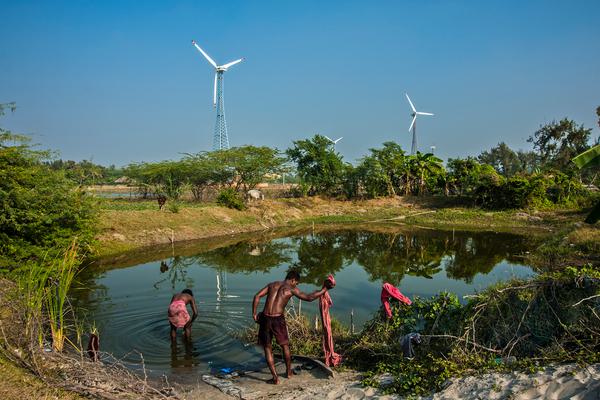Calling for People-Centred Net-Zero Scrutiny
22 April 2022

This Earth Day is marked by the IPCC’s latest major reports, both on Impacts, Adaptation and Vulnerability and on Mitigation. We have less than three years to halt the rise of global emissions and less than a decade to cut them in half. The oil and gas shortages due to supply chain disruption and price shocks because of the Russian invasion of Ukraine are yet another reason to redouble efforts to diversify energy systems away from reliance on high-carbon industries and to invest exponentially in renewable sources.
Last year’s COP26 summit featured many new commitments by governments of all sizes and companies from all sectors to decarbonise by 2050. Some even included insights into their nearer-term 2030 targets. But the Glasgow summit was also underwhelming in seeing how ambition will translate into action, with robust systems to ensure that promises made are kept.
This was a key reflection of the UN Secretary General at COP26, who has recently launched a high-level expert group to dig into the lofty claims of businesses, financial actors, cities and other non-governmental actors, to stress test their bona fides. Such efforts are necessary, but also important to state clearly that achieving net-zero will only be delayed if it is pursued without a holistic lens on the impacts to workers, communities, consumers and others adversely affected by decarbonisation action.
Without concerted efforts to protect and respect human rights as climate responses scale up, social unrest will quickly become our biggest challenge in achieving net-zero by 2050.
Scrutiny of Net-Zero Claims Should Include Social Integrity
As companies and other actors move forward in making net-zero commitments real, their actions must be undertaken with an integrated view of both the environmental and social impacts at stake in the transition – positive as well as negative. Addressing the social impacts of climate action is increasingly referred to as the ‘just transition’ agenda, receiving some notable attention at COP26.
The opportunity of net-zero momentum is to harness the tremendous change required across every sector to re-engineer the global economy in ways that decarbonise the planet while strengthening protections for workers and communities.
Just transitions represent an integrated response to the dual crises of climate change and extreme inequality. These dual crises being the symptoms of a deeper, structural sickness – a broken economic system reliant on extracting resources beyond peoples’ and the planet’s limits. The opportunity of net-zero momentum therefore is to harness the tremendous change required across every sector to re-engineer the global economy in ways that decarbonise the planet while strengthening protections for workers and communities. Broadly defined, just transitions are sector-, region-, or economy-wide processes that produce the plans, policies, and investments for ensuring low or zero emissions alongside social protections, decent jobs, poverty elimination, and thriving and resilient communities.
Calls for just transitions may be seen by some as a distraction that may delay climate action. In fact, the opposite is true. The climate crisis is already affecting our collective ability to reach our 2030 Sustainable Development Goals. As Rachel Kyte, the former UN Special Representative for Sustainable Energy For All, reflected recently, without concerted efforts to protect human rights as climate responses scale up, social unrest will quickly become our biggest challenge in achieving net-zero by 2050.
Rules of the Road Needed for Public and Private Actors in Just Transitions
Just transitions offer an inspiring and visionary approach, and one that is beginning to be grappled with in real time around the world at the company, sectoral, city, national, and regional levels. It represents a pathway for moving from an unjust, high-carbon global economy to one that is equitable and green.
But this vision will never be realised if net-zero is pursued with a singular focus on emissions-reductions at all costs. Nor will progress be made if some “rules of the road” are not clarified for how governments and the private sector meet their responsibilities – environmental and social – across the spectrum of supply, demand, and financing toward the green economy, starting with energy but quickly expanding to other sectors.
We need to clarify some “rules of the road” for how governments and the private sector meet their responsibilities – environmental and social – across the spectrum of supply, demand, and financing toward the green economy.
- Supply: The green economy will need more, not less, mined resources for renewables technology and land for related infrastructure. Long experience from traditional energy sectors has shown time and again the array of risks to workers and communities these activities can pose - risks that are often foreseeable and preventable, if an integrated approach to business, human rights, and climate action is deployed. As the transition to net-zero gathers pace, all energy and commodity companies will need to demonstrate not only their carbon but also their social credentials.
- Demand: Despite recent price shocks, the exponential rise in corporate purchasing of renewable energy sources will continue to gather speed. A broad mix of technology and consumer-facing brands are making up this bulk of this fast-growing wave. Many of these companies have had human rights policies and social risk management systems in place for years. But most are not applying them to this growing area of their business or using their leverage to ensure renewable energy providers are respecting the rights of workers, communities, and others affected by their activities. Even more can and should be asked of local and national governments supplying their grids with increasingly renewable sources.
- Financing: The range of green finance claims made at COP26 were in large part responsible for the formation of the Secretary General’s new scrutiny group. Private and public financial institutions increasingly appear to be on the road to net-zero, reflecting growing internalisation of climate as a material risk to their businesses and the wider financial system. They don’t want to be stuck with a fossil fuel asset that no longer holds the same value that it used to. But these same actors are not yet looking at the risks that energy transitions can pose to people along the way, and the role their finance plays. Leveraging the financing of transitions will be essential to advancing truly just and equitable transitions to net-zero.
Without greater coherence across the supply, demand, and financing of current and coming net-zero transitions, claims of “just” and responsible practices will mean little.
Agreed, rights-based standards that can guide all aspects of work to decarbonise are urgently needed. Without greater coherence across the supply, demand, and financing of current and coming transitions, claims of “just” and responsible practices will mean little. If COP26 reflected signs of greater ambition, then COP27 must be about building confidence to make that ambition real. Scrutinising net-zero claims is essential to build that confidence. But the full picture of every actor’s pathway to net-zero must include scrutiny of how people are impacted along the way.
We should expect much more of this type of hybrid governance to come as transitions play out at different rates, in different contexts, and move at a pace far quicker than governments’ ability to regulate. Scrutiny of net-zero claims must maintain constant, year-on-year pressure, and include in depth assessments of people-centred climate action to ensure net-zero commitments are being achieved responsibly. Otherwise, one crisis is being traded for another when a much more inspiring future – where people and the planet are thriving – could be in store.




